- Clone
- TC15-12F12.2 (See other available formats)
- Regulatory Status
- RUO
- Other Names
- Signaling Lymphocyte Activation Molecule (SLAM), IPO-3
- Isotype
- Rat IgG2a, λ
- Ave. Rating
- Submit a Review
- Product Citations
- publications
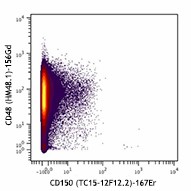
-

Mouse bone marrow cells stained with 156Gd anti-CD48 (HM48.1) and 167Er anti-CD150 (TC15-12F12.2). Viable lineage- cells are displayed in the analysis. Data provided by DVS Sciences.
CD150 is a 75-95 kD member of the immunoglobulin superfamily, also known as SLAM (signaling lymphocyte activation molecule) or IPO-3. CD150, a single chain type I transmembrane molecule, is expressed on thymocytes, T cell subsets, B cells, dendritic cells, and endothelial cells. The expression is upregulated upon activation. CD150 expression has been shown to be maintained on Th1 but not Th2 clones. T regulatory cells express a relatively high level of CD150. Antibodies against CD150 have been shown to augment IFN-γ production by Th1 cells, especially when co-stimulated through the TCR. CD150 associates with the src homology 2-domain-containing protein tyrosine phosphatase SHP-2, and this association is thought to be involved in signal transduction. In combination with CD48, CD150 is a useful marker for hematopoietic stem cell studies.
Product DetailsProduct Details
- Verified Reactivity
- Mouse
- Antibody Type
- Monoclonal
- Host Species
- Rat
- Immunogen
- Mouse SLAM-human IgG1 fusion protein
- Formulation
- Phosphate-buffered solution, pH 7.2, containing 0.09% sodium azide and EDTA.
- Preparation
- The antibody was purified by affinity chromatography.
- Concentration
- 1.0 mg/ml
- Storage & Handling
- The antibody solution should be stored undiluted between 2°C and 8°C
- Application
-
FC - Quality tested
CyTOF® - Verified - Recommended Usage
-
This product is suitable for use with the Maxpar® Metal Labeling Kits. For metal labeling using Maxpar® Ready antibodies, proceed directly to the step to Partially Reduce the Antibody by adding 100 µl of Maxpar® Ready antibody to 100 µl of 4 mM TCEP-R in a 50 kDa filter and continue with the protocol. Always refer to the latest version of Maxpar® User Guide when conjugating Maxpar® Ready antibodies.
- Application Notes
-
The TC15-12F12.2 antibody has been reported to enhance the production of IFN-? by Th1 cells stimulated through TCR. Additional reported applications (for the relevant formats) include: immunoprecipitaion17, enhancing IFN-? production by Th1 cells when stimulated with CD31, and inhibiting CD3 induced T cell proliferation6. The Ultra-LEAF™ purified antibody (Endotoxin <0.01 EU/µg, Azide-Free, 0.2 µm filtered) is recommended for functional assays (Cat. No. 115949 & 115950).
- Additional Product Notes
-
Maxpar® is a registered trademark of Standard BioTools Inc.
-
Application References
(PubMed link indicates BioLegend citation) -
- Castro AG, et al. 1999. J. Immunol. 163:5860. (FC, Costim, IP)
- Forsberg EC, et al. 2005. PLoS Genet. 1:e28. (FC)
- Terrazas LI, et al. 2005. Int. J. Parasitol. 35:1349. (FC)
- Cannons JL, et al. 2006. J. Exp. Med. 203:1551. (FC)
- Umemoto T, et al. 2006. J. Immunol. 177:7733. (FC)
- Jordan MA, et al. 2007. J. Immunol. 178:1618. (FC, Block) PubMed
- Jung Y, et al. 2007. Blood 110:82. PubMed
- Pimanda JE, et al. 2007. Proc. Natl. Acad. Sci. USA 104:840.
- Sugiyama T, et al. 2007. Proc. Natl. Acad. Sci. USA 104:175.
- Kim I, et al. 2006. Blood 108:737. PubMed
- Ema H, et al. 2006. Nat Protoc. 1:2979. PubMed
- Fraser ST, et al. 2007. Blood 109:4616. PubMed
- Jung Y, et al. 2008. Stem Cells. 26:2042. Pubmed
- Song J, et al. 2010. Blood 115:2592. PubMed
- Cridland SO, et al. 2009. Blood Cell. Mol. Dis. 43:149. (FC) PubMed
- Morita Y, et al. 2010. J. Exp Med. 207:1173. PubMed
- Talaei N, et al. 2015. J. Immunol. 195(10):4623. PubMed
- Product Citations
-
- RRID
-
AB_2563721 (BioLegend Cat. No. 115933)
Antigen Details
- Structure
- Ig superfamily, 75-95 kD
- Distribution
-
Thymocytes, T cell subset, B lymphocytes, dendritic cells, endothelial cells
- Function
- B cell and dendritic cell costimulation
- Ligand/Receptor
- CD150
- Cell Type
- B cells, Dendritic cells, Endothelial cells, T cells, Thymocytes, Tregs
- Biology Area
- Costimulatory Molecules, Immunology, Innate Immunity
- Molecular Family
- Adhesion Molecules, CD Molecules
- Antigen References
-
1. Cocks BG, et al. 1995. Nature 376:260.
2. Punnonen J, et al. 1997. J. Exp. Med. 185:993.
3. Sidorenko SP, et al. 1993. J. Immunol. 151:4614. - Gene ID
- 27218 View all products for this Gene ID
- UniProt
- View information about CD150 on UniProt.org
Related FAQs
- Can I obtain CyTOF data related to your Maxpar® Ready antibody clones?
-
We do not test our antibodies by mass cytometry or on a CyTOF machine in-house. The data displayed on our website is provided by Fluidigm®. Please contact Fluidigm® directly for additional data and further details.
- Can I use Maxpar® Ready format clones for flow cytometry staining?
-
We have not tested the Maxpar® Ready antibodies formulated in solution containing EDTA for flow cytometry staining. While it is likely that this will work in majority of the situations, it is best to use the non-EDTA formulated version of the same clone for flow cytometry testing. The presence of EDTA in some situations might negatively affect staining.
- I am having difficulty observing a signal after conjugating a metal tag to your Maxpar® antibody. Please help troubleshoot.
-
We only supply the antibody and not test that in house. Please contact Fluidigm® directly for troubleshooting advice: http://techsupport.fluidigm.com/
- Is there a difference between buffer formulations related to Maxpar® Ready and purified format antibodies?
-
The Maxpar® Ready format antibody clones are formulated in Phosphate-buffered solution, pH 7.2, containing 0.09% sodium azide and EDTA. The regular purified format clones are formulated in solution that does not contain any EDTA. Both formulations are however without any extra carrier proteins.
Other Formats
View All CD150 Reagents Request Custom ConjugationCompare Data Across All Formats
This data display is provided for general comparisons between formats.
Your actual data may vary due to variations in samples, target cells, instruments and their settings, staining conditions, and other factors.
If you need assistance with selecting the best format contact our expert technical support team.
-
Purified anti-mouse CD150 (SLAM)
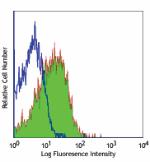
C57BL/6 mouse splenocytes were stained with purified CD150 (... -
PE anti-mouse CD150 (SLAM)
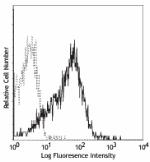
C57BL/6 mouse splenocytes were stained with CD150 (clone TC1... 
C57BL/6 mouse bone marrow cells were stained with CD150 (clo... -
Biotin anti-mouse CD150 (SLAM)
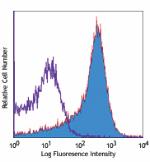
C57BL/6 mouse splenocytes were stained with biotinylated CD1... -
APC anti-mouse CD150 (SLAM)
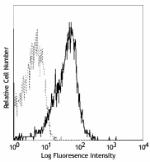
C57BL/6 mouse splenocytes were stained with CD150 (clone TC1... 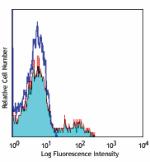
C57BL/6 mouse bone marrow cells were stained with CD150 (clo... -
PE/Cyanine5 anti-mouse CD150 (SLAM)
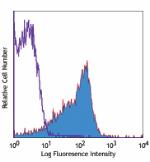
C57BL/6 mouse splenocytes were stained with CD150 (clone TC1... 
C57BL/6 mouse bone marrow cells were stained with CD150 (clo... -
PE/Cyanine7 anti-mouse CD150 (SLAM)
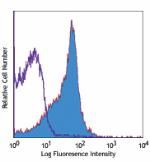
C57BL/6 mouse splenocytes were stained with CD150 (clone TC1... 
C57BL/6 mouse bone marrow cells were stained with CD150 (clo... -
Alexa Fluor® 488 anti-mouse CD150 (SLAM)
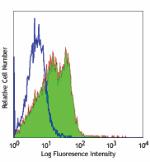
C57BL/6 mouse splenocytes were stained with CD150 (clone TC1... 
C57BL/6 mouse bone marrow cells were stained with CD150 (clo... -
Alexa Fluor® 647 anti-mouse CD150 (SLAM)
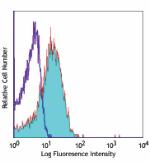
C57BL/6 mouse splenocytes were stained with CD150 (clone TC1... 
C57BL/6 mouse bone marrow cells were stained with CD150 (clo... -
PerCP/Cyanine5.5 anti-mouse CD150 (SLAM)
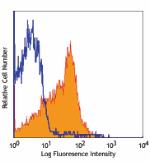
C57BL/6 mouse splenocytes were stained with CD150 (clone TC1... 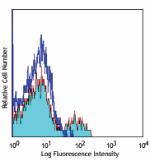
C57BL/6 mouse bone marrow cells were stained with CD150 (clo... -
Pacific Blue™ anti-mouse CD150 (SLAM)

C57BL/6 mouse splenocytes were stained with CD150 (clone TC1... -
Brilliant Violet 421™ anti-mouse CD150 (SLAM)
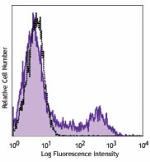
C57BL/6 mouse bone marrow cells were stained with SLAM (clon... 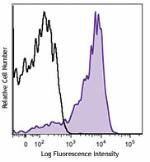
C57BL/6 mouse splenocytes were stained with SLAM (clone TC15... -
Brilliant Violet 605™ anti-mouse CD150 (SLAM)
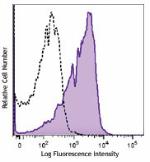
C57BL/6 mouse splenocytes were stained with CD150 (clone TC1... -
Brilliant Violet 510™ anti-mouse CD150 (SLAM)
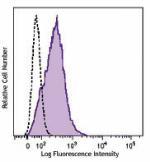
C57BL/6 mouse splenocytes were stained with SLAM (clone TC15... -
Brilliant Violet 650™ anti-mouse CD150 (SLAM)
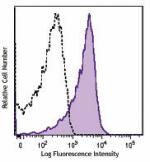
C57BL/6 mouse splenocytes were stained with CD150 (clone TC1... 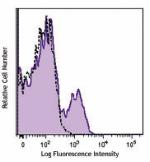
C57BL/6 mouse bone marrow cells were stained with CD150 (clo... -
Purified anti-mouse CD150 (SLAM) (Maxpar® Ready)
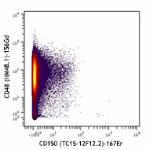
Mouse bone marrow cells stained with 156Gd anti-CD48 (HM48.1... -
PE/Dazzle™ 594 anti-mouse CD150 (SLAM)
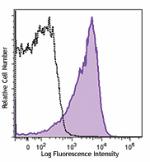
C57BL/6 mouse splenocytes were stained with CD150 (clone TC1... 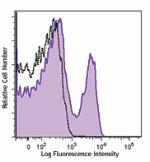
C57BL/6 mouse bone marrow cells were stained with CD150 (clo... -
Brilliant Violet 785™ anti-mouse CD150 (SLAM)
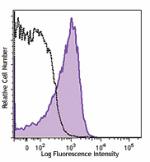
C57BL/6 mouse splenocytes were stained with CD150 (clone TC1... 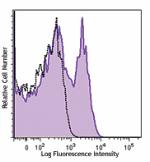
C57BL/6 mouse bone marrow cells were stained with CD150 (clo... -
APC/Fire™ 750 anti-mouse CD150 (SLAM)

C57BL/6 Mouse splenocytes were stained with CD150 (SLAM) (cl... 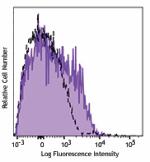
C57BL/6 mouse bone marrow cells were stained with CD150 (SLA... -
Brilliant Violet 711™ anti-mouse CD150 (SLAM)
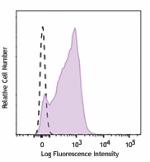
C57BL/6 mouse splenocytes were stained with CD150 (clone TC1... 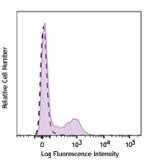
C57BL/6 mouse bone marrow cells were stained with CD150 (clo... -
TotalSeq™-A0203 anti-mouse CD150 (SLAM)
-
TotalSeq™-C0203 anti-mouse CD150 (SLAM)
-
Ultra-LEAF™ Purified anti-mouse CD150 (SLAM)
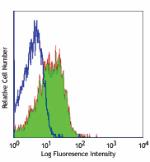
C57BL/6 mouse splenocytes were stained with Ultra-LEAF™ puri... -
TotalSeq™-B0203 anti-mouse CD150 (SLAM)













Follow Us